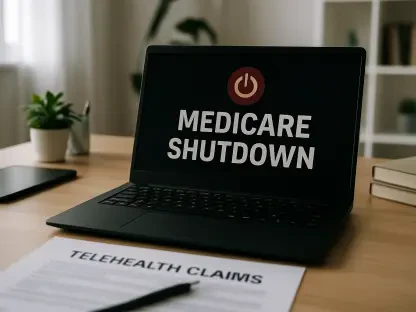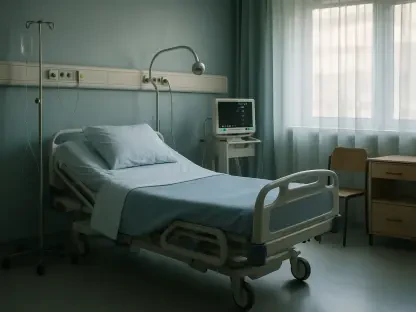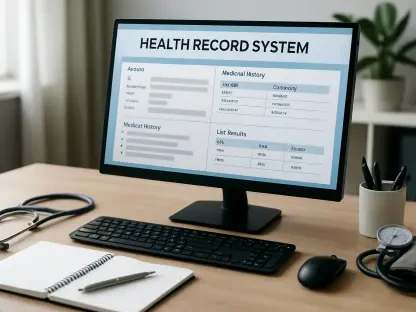The recent proposal by House Republicans to introduce a funding bill has sparked intense debate, especially among medical professionals and healthcare organizations. The bill, aiming to keep the government operational past March 14, controversially includes a 2.8% cut to the Medicare payment rate for physicians. This proposal has led to significant backlash due to potential negative impacts on healthcare accessibility and quality, particularly in rural communities.
Legislative Changes
Sudden Exclusion of Physician Payment Provisions
Initial movements in Congress saw bipartisan support for a bill intended to prevent reductions in physician payments and include a 2% payment update. However, the final proposal unexpectedly omitted these provisions, raising concerns among healthcare stakeholders. Bipartisan lawmakers initially collaborated to safeguard physicians from a 2.83% reduction in Medicare payments, highlighting the need to offset the rising operational costs of medical practices. Yet, the abrupt exclusion of these vital provisions from the updated proposal has bewildered and provoked strong reactions from the medical community.
The sudden shift in the bill’s content has left many stakeholders questioning the rationale behind the exclusion of physician payment provisions. The bill’s initial intent was to ensure that physicians received a fair reimbursement to maintain the quality of care patients expect and deserve. Critics argue that failing to include these provisions disregards the ongoing financial challenges faced by medical practices, thereby jeopardizing the stability of the healthcare system. The amendments have dramatically altered the landscape, inciting fears over the impending impact on both healthcare providers and patients alike.
Legislative Maneuvering and Political Context
The bill’s changes are seen as a reaction to potential demands for increased spending. This backpedaling by certain lawmakers has shocked and dismayed medical groups lobbying for the preservation of Medicare funding. Reports indicate that the removal of Medicare funding provisions was influenced by concerns that lawmakers might seek additional spending if these were retained. This legislative maneuvering has significantly shifted the narrative, underscoring the delicate balance required in fiscal negotiations within Congress.
This political context has further complicated the discussions surrounding healthcare funding, with proponents of Medicare cuts claiming fiscal prudence, while opponents emphasize the adverse implications for healthcare quality and accessibility. The political tug-of-war over Medicare funding highlights the broader ideological conflicts at play, reflecting the challenge of reconciling different priorities within government policy. The controversy underscores the broader tension between the need for budgetary discipline and the imperative to ensure accessible and high-quality healthcare for all Americans.
Reactions from Medical Community
Physicians’ Opposition
Medical professionals, represented by groups like the American Medical Association (AMA) and the Medical Group Management Association, have strongly opposed the cuts. Dr. Bruce Scott of the AMA argues that these changes endanger the quality and accessibility of healthcare. The AMA has been vocal in its criticism, emphasizing that reduced Medicare payments could deter physicians from accepting Medicare patients, thereby limiting patient access to essential healthcare services. Anders Gilberg, representing the Medical Group Management Association, has similarly called on Congress to reconsider and reinstate mechanisms to prevent provider payment cuts.
The unified opposition from healthcare groups underscores the potential risks that the proposed cuts pose to both patients and medical practices. Physicians and their representative organizations argue that the reduction in reimbursements could have profound and far-reaching consequences, ultimately affecting the quality of care patients receive. The strain on medical practices, already grappling with rising costs and logistical challenges, could be exacerbated, further diminishing their capacity to serve their communities effectively. The strong backlash highlights the critical intersection of fiscal policy and public health, raising urgent questions about the sustainability of current healthcare funding models.
Economic Strains on Practices
With the ongoing trend of Medicare cuts, physicians face rising operational costs amidst declining reimbursement rates. Practice costs have increased by 3.5% this year alone, putting further financial strain on healthcare providers. Statistics from the AMA indicate a stark contrast between escalating practice expenses and the stagnation or reduction in Medicare reimbursement rates, painting a concerning picture for the financial sustainability of medical practices. Since 2001, Medicare payment rates have plummeted by 33% when adjusted for inflation, exacerbating the economic pressures faced by the medical community.
These economic strains are not merely theoretical concerns but have practical implications for the day-to-day operations of healthcare providers. The widening gap between costs and reimbursements affects the ability of medical practices to maintain requisite staff levels, invest in necessary medical equipment, and provide continuous training and development for their teams. Consequently, these financial pressures can lead to burnout among healthcare professionals and reduced quality of care for patients, highlighting the need for a comprehensive reassessment of how Medicare funding is structured and distributed.
Impact on Rural Healthcare
Access to Healthcare in Rural Areas
The proposed reduction in Medicare payments could worsen the already critical situation in rural areas where healthcare access is limited. A significant statistic indicates that 100 million Americans lack access to primary care, a number that has been escalating. These rural communities, already grappling with inadequate healthcare resources, face an even starker reality if Medicare payment cuts are implemented. The lack of financial support for physicians in rural areas could dissuade new doctors from establishing practices in these regions, further isolating underserved populations.
Healthcare access disparities are particularly pronounced in rural America, where the scarcity of healthcare providers and facilities presents significant barriers to receiving timely and adequate care. The proposed Medicare cuts threaten to widen this gap, making it increasingly difficult for rural patients to find local medical services. As community health centers struggle to maintain services amid dwindling funding, the potential for a healthcare access crisis looms large. Addressing these disparities requires targeted policy interventions that prioritize sustainable funding models and support systems for rural healthcare providers.
Rural Healthcare Crisis Intensified
With the looming threat of decreased funding, rural communities might see a further decline in available healthcare services, exacerbating the challenges faced by these populations and putting additional pressure on existing facilities. Rural hospitals and clinics are often the frontline providers of healthcare in their regions, yet they operate on thin margins and rely heavily on Medicare reimbursements to remain viable. The prospect of reduced payments poses a direct threat to their operational stability, potentially leading to closures and further diminishing access to care for rural residents.
The impact of such closures can be devastating to rural communities, where healthcare services may already be sparse and spread across large geographic areas. Patients in these areas might face longer travel times to receive care, increased health risks due to delays in treatment, and heightened overall healthcare costs. The intensification of the rural healthcare crisis underscores the necessity for sustained and strategic funding to ensure that rural populations are not left behind in the broader healthcare system. Comprehensive support for rural healthcare can help bridge these gaps, promoting equitable access and fostering healthier communities.
Political and Fiscal Implications
Internal Government Conflict
Lawmakers like Rep. Greg Murphy, R-N.C., a physician, have pledged to contest the bill unless it addresses the issue of low Medicare payment rates. This stance reveals internal conflicts over healthcare funding priorities within the government. Murphy’s position underscores the divide within Congress regarding the balance between fiscal responsibility and the imperative to maintain adequate funding for essential healthcare services. His advocacy mirrors concerns voiced by the medical community and reflects the broader struggle to align policymaking with the practical needs of healthcare providers and patients.
The internal discord within the legislative body highlights the complexities of crafting healthcare policy in a politically charged environment. Different factions within Congress hold varying perspectives on the best approaches to managing healthcare budgets, creating significant challenges in reaching a consensus. This intra-governmental conflict is indicative of the larger ideological battle over the role of government in healthcare and the fiscal strategies necessary to sustain vital programs like Medicare.
Broader Financial Repercussions
Recently, House Republicans introduced a funding bill that has triggered a heated debate, particularly among medical professionals and healthcare organizations. This bill, designed to keep the government running beyond March 14, controversially proposes a 2.8% reduction in the Medicare payment rate for physicians. The proposal has sparked significant backlash due to concerns about potential adverse effects on healthcare access and quality, especially in rural areas where medical services are already limited. Healthcare advocates argue that this cut could exacerbate existing challenges faced by rural communities, further jeopardizing their access to medical care and specialists. Critics worry that decreases in Medicare payments may discourage medical providers from serving in these underserved regions, leading to a decline in healthcare availability and quality. The debate underscores the ongoing tension between efforts to control government spending and the need to maintain robust healthcare services nationwide.









